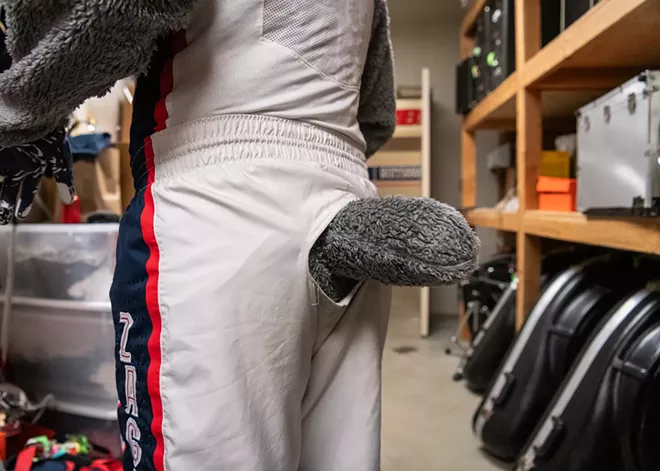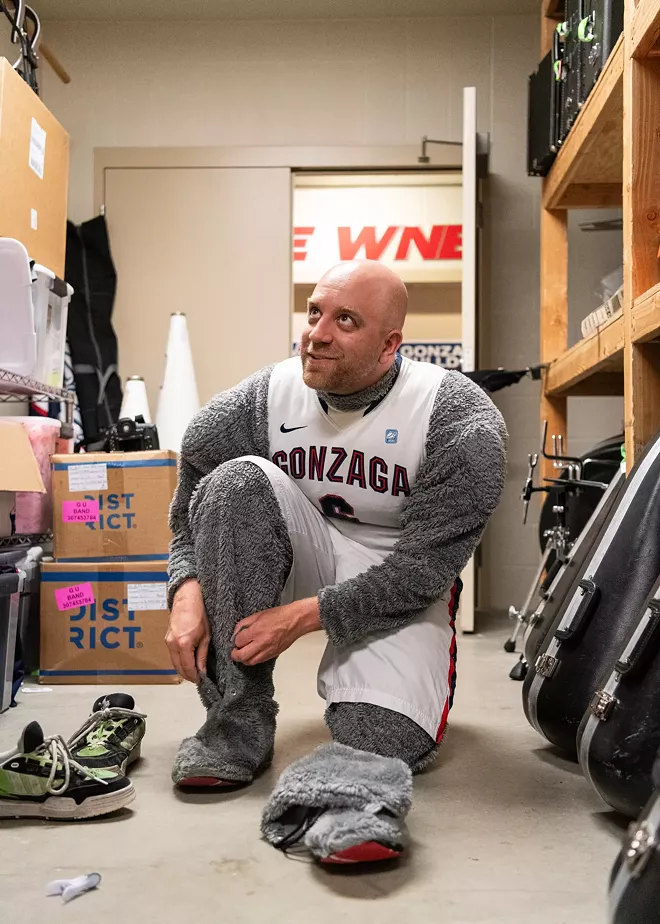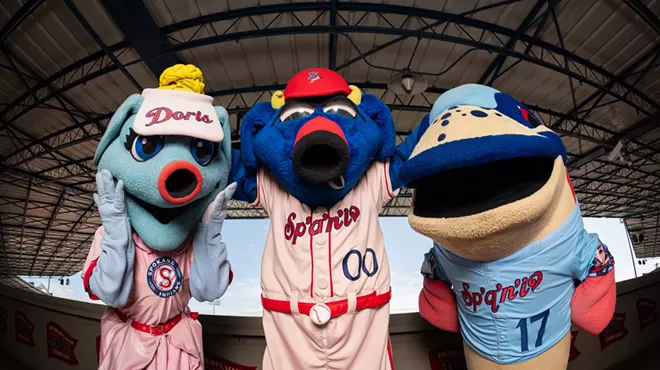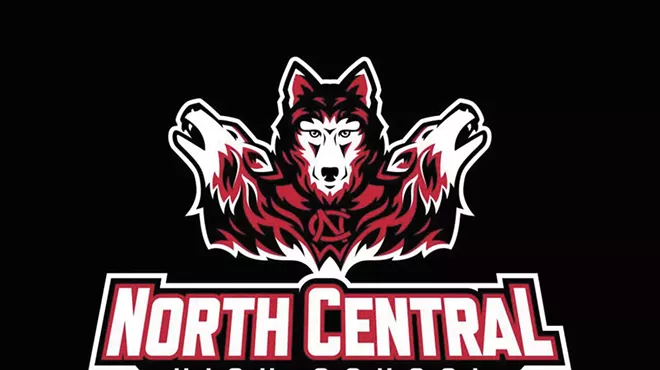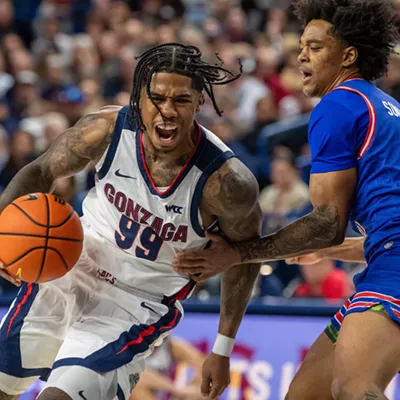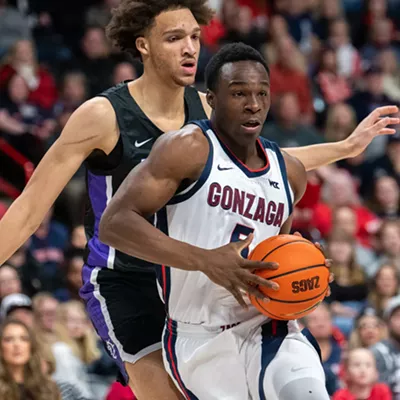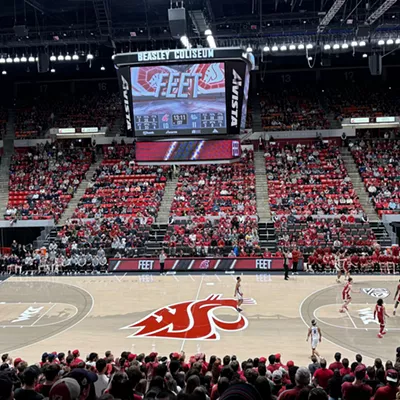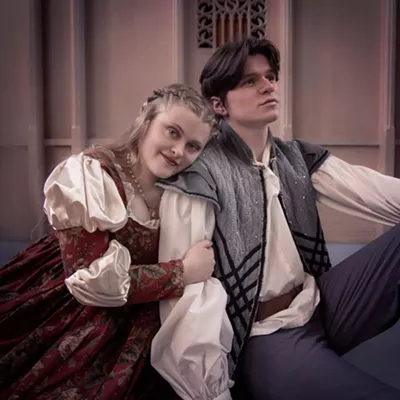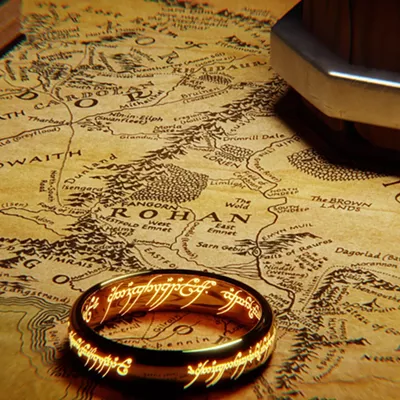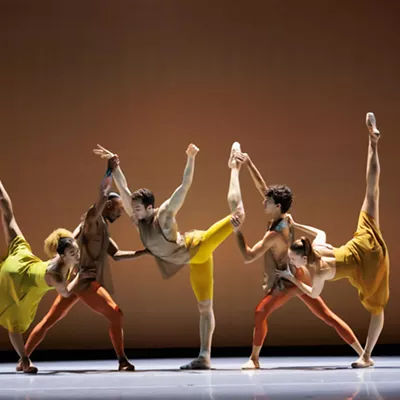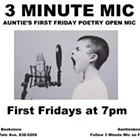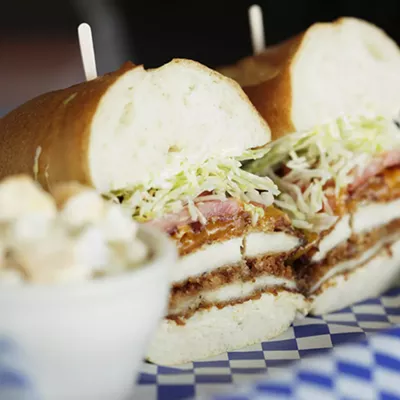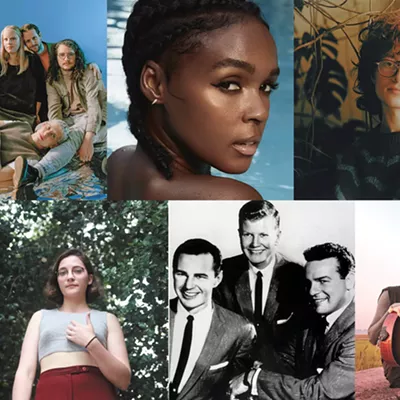
"HE'S GOT THAT DOG IN HIM."
Over the past year, this phrase has become the meme-ified term du jour to describe athletes who come up big when the moment matters most through a combination of mental toughness and gritty will to win. Buffalo Bills quarterback Josh Allen flaming out in the playoffs again? Maybe he doesn't have that dog in him. Miami Heat star Jimmy Butler carrying mediocre teams to the NBA Finals? Yeah, he's got that dog in him.
Dear readers, I very much do not have that dog in me.
But for one recent evening the inverse was true for Gonzaga University's beloved mascot, Spike the Bulldog. Spike? Yeah, he's got that Seth in him.
For one night only, I donned that furry suit and the oversized canine head to spend a spell actually being Spike.
The first rule of Spike Club? YOU DO NOT TALK ABOUT SPIKE CLUB.
Perhaps the funniest aspect of becoming Spike is the sheer levels of secrecy involved in the process.
The mascot coordinator who guides me through the process? "You cannot disclose their name." Have they been Spike before? "No comment." Who are the other current Spikes? "We keep that secret." How many other Spikes are there currently? "We're not going to say."
I literally did a cover feature on pro wrestling earlier this summer, and those performers aren't even close to as committed to keeping up the facade of kayfabe. It's impossible not to laugh at the seriousness surrounding adults dressing up in a dog costume.
I arrived outside McCarthey Athletic Center about an hour before that night's scheduled volleyball showdown between Gonzaga and San Diego State in the adjoining Charlotte Y. Martin Centre. The mascot-coordinator-who-shall-not-be-named greeted me, then quickly ushered me into the bowels of the MAC. We eventually found our way into a small storage room, where Spike's suit, costume changes and many heads reside.
Gonzaga is somewhat unique in that most of the time Spikes wander around free without a handler, which also means they have to do every aspect of mascoting solo. From the jump, that seems like a Herculean task... because I legit do not think I could've gotten the outfit on by my lonesome.
Becoming Spike is a process. In order to get Spike's fake flexing musculature, I must first instantly bulk up via shoulder pads. Slipping into the full fur suit wasn't a challenge, but zipping up the back on my own while wearing shoulder pads? Yikes. The shorts were easy (cute little hole for the tail!), but slipping the Gonzaga basketball jersey over the rest was a pseudo-claustrophobic nightmare. Oh, and the jersey must be tucked into the shorts — Spike is a professional after all, not a sloppy Desmet Hall undergrad bro.
Spike's furry feet shoes were no issue, but the furry hands were M.I.A., so I had to instead slip on a pair of football gloves to obscure my unseemly human flesh. This was somewhat of an issue, because my 6-foot-3-inch wingspan dwarfs most Spike portrayers (who are well under 6 feet tall with shorter wingspans), so I had to struggle to make sure the forbidden wrist flesh wouldn't be visible. Once I lowered the bulldog head atop my overly large cranium the transformation was complete — I was Spike.
Or rather, I now looked like Spike. There was still training to do before I could accurately portray the Zags' main pooch.
The second rule of Spike Club? NO TALKING.
Essentially, Spike is a canine mime. This being the case, one's physicality once in the suit is the only line of communication. Mascot-coordinator-who-shall-not-be-named literally had to walk me through the paces. Spike's stride is a swaggy one, side-to-side, bent knees, shoulders leaning into each step, and head going left and right the whole time. The last point is especially essential as Spike's head basically provides zero peripheral vision (try cupping your hands together over your eyes and looking through the circle they create... that's basically Spike's vision), so looking back and forth is needed to not physically run into anyone.
This lack of vision also feeds into other Spike mannerisms: Wave a lot because it's easier to see folks at a distance; get down to a kid's level when interacting with them to make them feel a connection and so that you can actually see them; fist bumps are essential cause you can just throw them out blindly (yet I still accidentally left a few folks hanging). Beyond that, the other main thing was to flex a lot — apparently Spike has a 1980s Hulk Hogan complex (minus the steroids and problematic behavior, of course).
After my crash-course doggy training session, it was time to meet the people. As I strode up to Zags fans arriving for the volleyball game, the appeal of being a mascot became apparent — people absolutely light up when they see Spike. Kids would instantly point and say "Spike!" to their folks, and were stoked when I crouched down to their level for a picture. In a hallway, a visiting recruit asked for a pic as well. Even the GU staffers working the game were happy to wave to their favorite anthropomorphic bulldog. It's just a joyful energy.
While it's harder to get the sparse Friday night crowd for a volleyball game fired up than a sold-out hoops tilt, it was still fun trying. Motioning them to get loud, clapping during player introductions, fist bumping the regulars and so on.
I ended up only donning the Spike costume for less than a full hour, but it was still an experience. Was it very sweaty? Yes. Was it as stinky in the suit as people suspect it to be? Surprisingly not! Is being a mascot an easy gig? No siree.
There simply aren't many chances where you can be out in public, not be yourself at all, not have to talk, and be completely adored. Being Spike offered all of that.
Maybe I have a little dog in me after all. ♦

